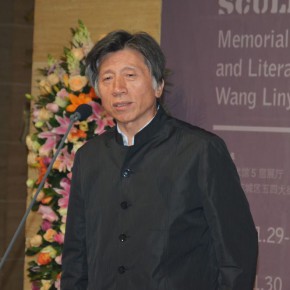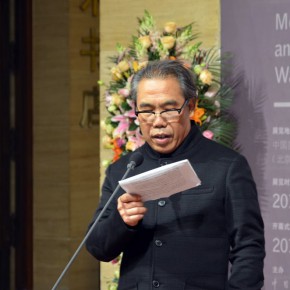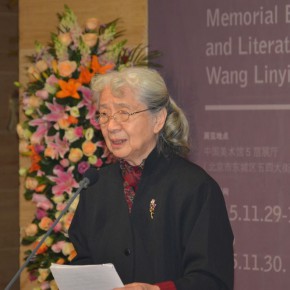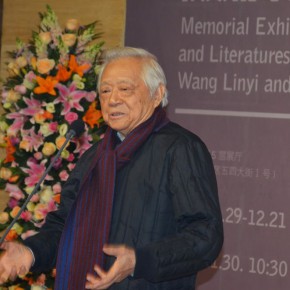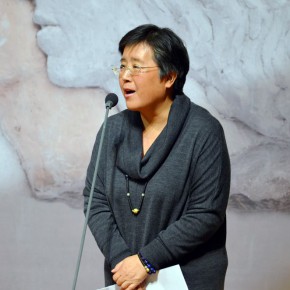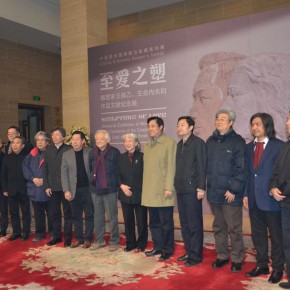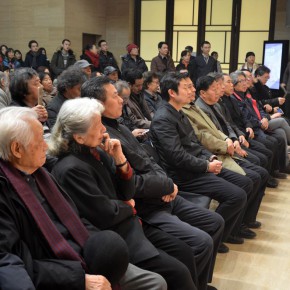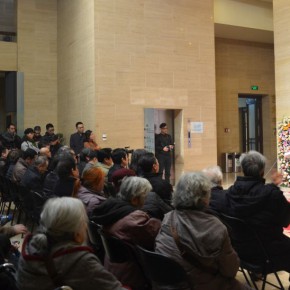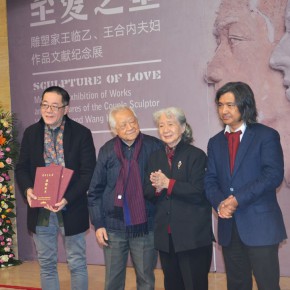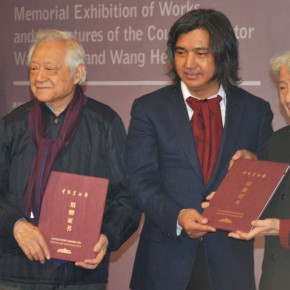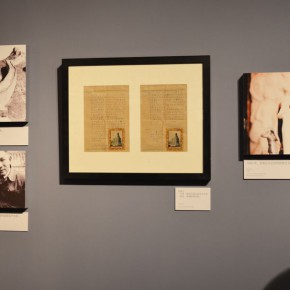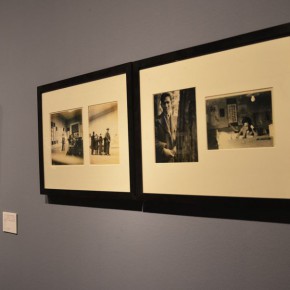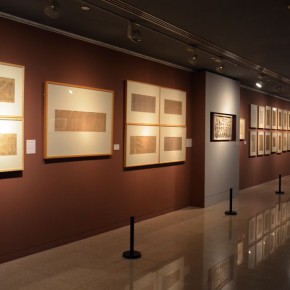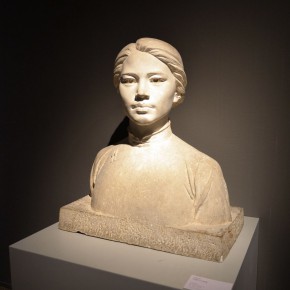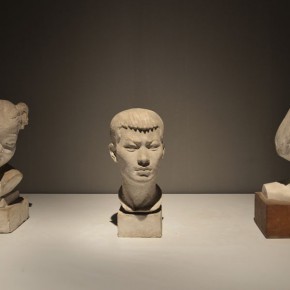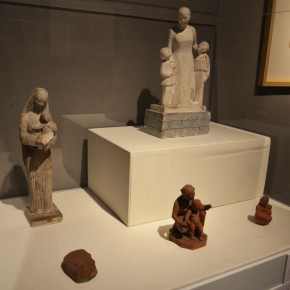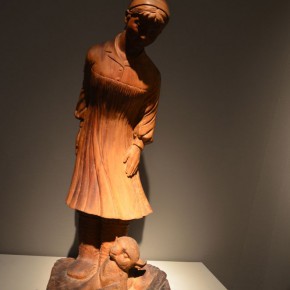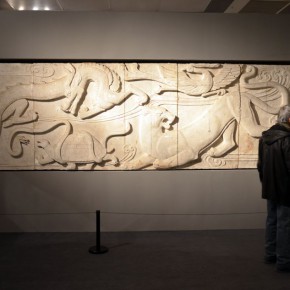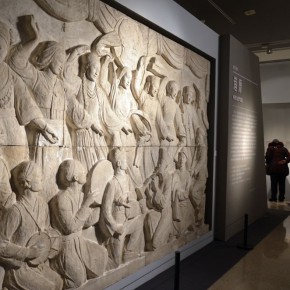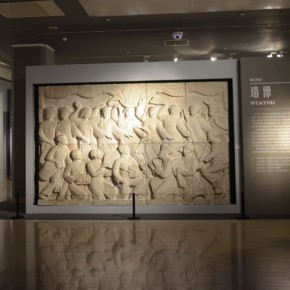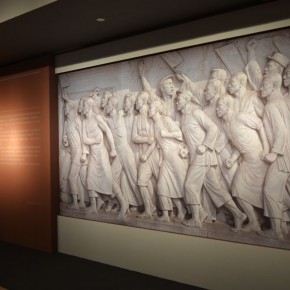
On the morning of November 30, 2015, hosted by the National Art Museum of China and CAFA, “Sculpture of Love – Memorial Exhibition of Works and Literature of the Couple Wang Linyi and Wang Henei” opened at the National Art Museum of China. The opening ceremony was presided over by Vice President of National Art Museum of China An Yuanyuan, Party member and Deputy Secretary of the Ministry of Culture Dong Wei, Vice Chairman of China Federation of Literary and Art Circles and Chairman of the China Artists Association Liu Dawei, Director of the Department of Art at the Ministry of Culture Zhu Di, Director of National Art Museum of China Wu Weishan, President of CAFA Fan Di’an, Party Secretary of the National Art Museum of China You Qingqiao, Deputy Party Secretary of CAFA Wang Shaojun, former President of Central Academy of Arts and Crafts, the adopted daughter of Wang Linyi and Wang Henei Chang Shana, former Director of Sculpture Art Committee at China Artists Association, former Party Secretary of CAFA Sheng Yang, Director of CAFA Art Museum Wang Huangsheng, the famous sculptors Cao Chunsheng, Zhang Dasheng, former Director of National Art Museum of China, famous artist Yang Lizhou, as well as numerous students of Wang Linyi and Wang Henei all attended the opening ceremony.
The Director of the National Art Museum of China Wu Weishan initially addressed the opening ceremony and he said that the couple Wang Linyi and Wang Henei (former name Renee Nikel) were remarkable and respectable sculptors and art educators. Wang Shaojun said the couple walked hand in hand for more than half a century, had made prominent contributions to the development of Chinese modern sculpture and sculptural education, and a true love story was left to us. Chang Shana called Wang Linyi her “Daddy Wang”, and affectionately recalled the history of Daddy Wang and his French wife, from classmates to lovers, husband and wife, from France to China, they had experienced war, migrating south, poverty and the Cultural Revolution. Then, the famous sculptor Sheng Yang addressed the group on behalf of their students.
President of CAFA Fan Di’an stressed that: “All the research, sorting, promotional work of the older generation of artists is in order to stir up people’s Chinese spirit in the new cultural developmental situation, inheriting and carrying forward the teaching ideas of the predecessors, to promote the development of careers in art and art education.”
The couple Wang Linyi and Wang Henei didn’t have a child and they would like to donate their works to CAFA, where they worked during their lifetime. At the end of the opening ceremony, Chang Shana and Sheng Yang accepted the certificates of donation by the Director of the National Art Museum of China Wu Weishan and the Director of CAFA Art Museum Wang Huangsheng, on behalf of Wang Linyi and Wang Henei. The National Art Museum of China will cast and permanently collect the works of Wang Linyi and Wang Henei in the collections of CAFA Art Museum and these works will be a part of the most important modern fine art works collected by the National Art Museum of China.
Wang Linyi was a famous sculptor and art educator in China in the 20th Century, and he never abandoned his deep exotic love with his wife Wang Henei, a sculptor from France which is very touching. It is the most complete and comprehensive large-scale exhibition for the couple ever, including more than 500 works and a collection of their literature, divided into 3 parts, including the “Monument”, “Figure” and “Statue”, to restore the art and life of the couple.
The part of “Monument” presents the related works and literature of the Monument of the People’s Heroes relief “May 30th Movement” created by Wang Linyi from 1953 to 1955. The “May 30th Movement” can be said to be a milestone of the monumental sculptures in Wang Linyi’s sculptural career, and the exhibition starts from this magnificent work to unfold the narrative and discussion of the art career of the couple Wang Linyi and Wang Henei.
Located at the 21st exhibition hall, the part of “figure” is through many pictures, literature and works to present the life experiences of Wang Linyi and Wang Henei before the 1950s, as well as the process of two people being acquainted with each other and falling in love with each other. With the help of Xu Beihong, Wang Linyi went to France to study sculpture in 1929. He won the first prize and was admitted to école nationale supérieure des Beaux-arts de Paris in 1932, and in the following year, he was acquainted with and fell in love with a French girl Renee Nikel. The newlyweds resolutely returned to China in 1937, and Renee Nikel was the renamed Wang Henei. In this section, it is divided into several small units to respectively restore the early experiences of this couple.
In the 3rd part of “Statue”, it focuses on the presentation of the sculptural creations by Wang Linyi and Wang Henei after the 1950s. Wang Linyi perfectly grasped and controlled the integral elements of the monumental sculptural creation with many characters, which is fully reflected in the “The Great Unity of All Ethnic Groups” created in 1951 and the “Northeastern Minority Industrial and Agricultural Production” created in 1958. Except for the monumental sculptures, Wang Linyi’s creation of portraits have always maintained a holistic grasp of the characters, while accidental and superficial things are abandoned, and only the rationally induced characteristics are maintained. The works such as “Cotton Mill Girl” (1956), “Female Portrait” (1962) removed tedious details and focuses on the portraying of eyes, nose and mouth, which still convey the unique spiritual temperament of the object. Wang Henei loved all sorts of small animals, and her animal sculptures have become one of the features of her sculptural art. In the work entitled “Leopard” (1979), she learned the feral beauty and majestic momentum of the animal sculptures of the Qin and Han Dynasties, inspired by traditional images such as “exorcising evil spirits”, the linear beauty of traditional Chinese art is perfectly fused in the sculptures of Wang Henei, and the fusion is neither stiff, nor artificial, “tradition” and “modern”, “East” and “West” are balanced in the works of Wang Henei. At the same time, Wang Henei’s creation of the figure has the temperament of Chinese people, which is the achievement of Wang Henei who had the true love of China and tried to blend in with it.
The exhibition continues to December 21.
Text and photo by Lin Jiabin, translated by Chen Peihua and edited by Sue/CAFA ART INFO


